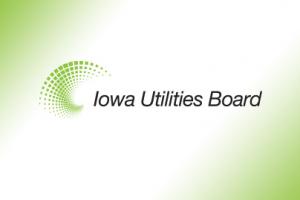Iowa Addresses the Inclusion of Negative Wind Revenues in Future EAC Filings

Although reiterating its support for wind energy programs, the Iowa Utilities Board has determined that, going forward, an electric utility should no longer be permitted to include in its annual energy adjustment clause (EAC) calculations any net losses resulting from the company's wind production costs exceeding the market-clearing price for wholesale energy supplies unless it also accounts for associated tax credits. At issue were numerous utility-scale wind units in which MidAmerican Energy Company had invested, with the cost of the facilities' associated output being recovered by the utility via its EAC mechanism.
In compliance with state energy policies emphasizing the benefits of wind power, MidAmerican a number of years ago had initiated various wind farm projects. The first group of those, denominated Wind I through Wind VII, had been approved for recognition in the utility's rate base in its last rate case, in 2013. Since that time, the utility has constructed several other wind units, known as Wind VIII through Wind XI. According to the record, the company's overall wind portfolio now contains more than 2,000 turbines.
Critical to MidAmerican's ability to capitalize the wind projects was the availability of production tax credits (PTCs) on a post-construction basis, which are used by the utility to offset other fuel and purchased power costs incurred by it. The PTC program was federally promulgated and provides for qualifying facilities to earn the credit for up to 10 years after being placed in commercial service. The PTC applies only to those eligible projects commencing operations after August 8, 2005. In Mid- American's case, the board had authorized each wind unit to earn a tax credit for every megawatt-hour (MWh) of energy produced.
However, Iowa's Office of Consumer Advocate (OCA) alleged that due to falling wholesale energy prices, the company's investments in the wind projects were no longer as economic. More specifically, the OCA questioned the propriety of the utility being able to recoup through its EAC its wind generation costs yet earn PTCs at the same time. In the OCA's opinion, it is unfair to ratepayers for them to bear all costs of the wind units while MidAmerican receives all the benefits in the form of PTCs.
The utility refuted the OCA's claims, pointing out that its wind assets allow it to displace far more expensive generation each year, which obviously benefits customers. The company further asserted that the current PTC level of about $22 per MWh will usually assure a unit can be operated cost-effectively. As an example, MidAmerican said that even if it costs more to run the wind units, say $12 per MWh, than to procure power from elsewhere, the PTC of $22 per MWh still provides revenue of $10 per MWh.
Moreover, the utility noted that, at least for the Wind I through Wind VII facilities, the board had already agreed that both actual production costs and PTC values could be reflected in the annual EAC. But, Mid- American conceded, the board had not necessarily adopted similar treatment for the newer wind projects.
In reviewing the different party positions, the board stated that the issue boiled down to whether "negative" wind revenue can be separated from PTCs for purposes of EAC reconciliation. The board found that PTCs are actually a form of revenue received by the utility, which is used to reduce the company's other energy supply costs when the PTCs are accounted for in the EAC.
On the other hand, the board said, negative wind revenue is, in fact, a cost - a cost associated with the generation of PTC benefits. Thus, the board reasoned, to allow negative wind revenue to pass through the EAC without the related PTCs would unfairly add to the customer cost burden while depriving them of the benefits of PTCs. As a result, the board concluded that the EAC had been structured so that negative revenues should not be tracked through the EAC separate and apart from PTCs.
In other words, the board stated, any negative wind revenues must be used solely as an offset to PTCs when calculating the EAC and should not be treated as an independent adjustment to total costs of energy. The board emphasized that the utility's EAC was designed to give effect to the principle of matching, by which the costs of an activity are to be borne by the party receiving the corresponding benefits.
Invoking that doctrine, the board averred that to the extent customers obtain a benefit from PTCs, they should also bear all costs related to the production of the PTCs, inclusive of negative wind revenue. Concomitantly, it stated, if MidAmerican receives tax credits, the utility rather than its ratepayers should be deemed liable for associated negative revenues. Re MidAmerican Energy Co., Docket Nos. EAC-2016-0006, EAC-2017-0006, June 12, 2017 (Iowa U.B.).



